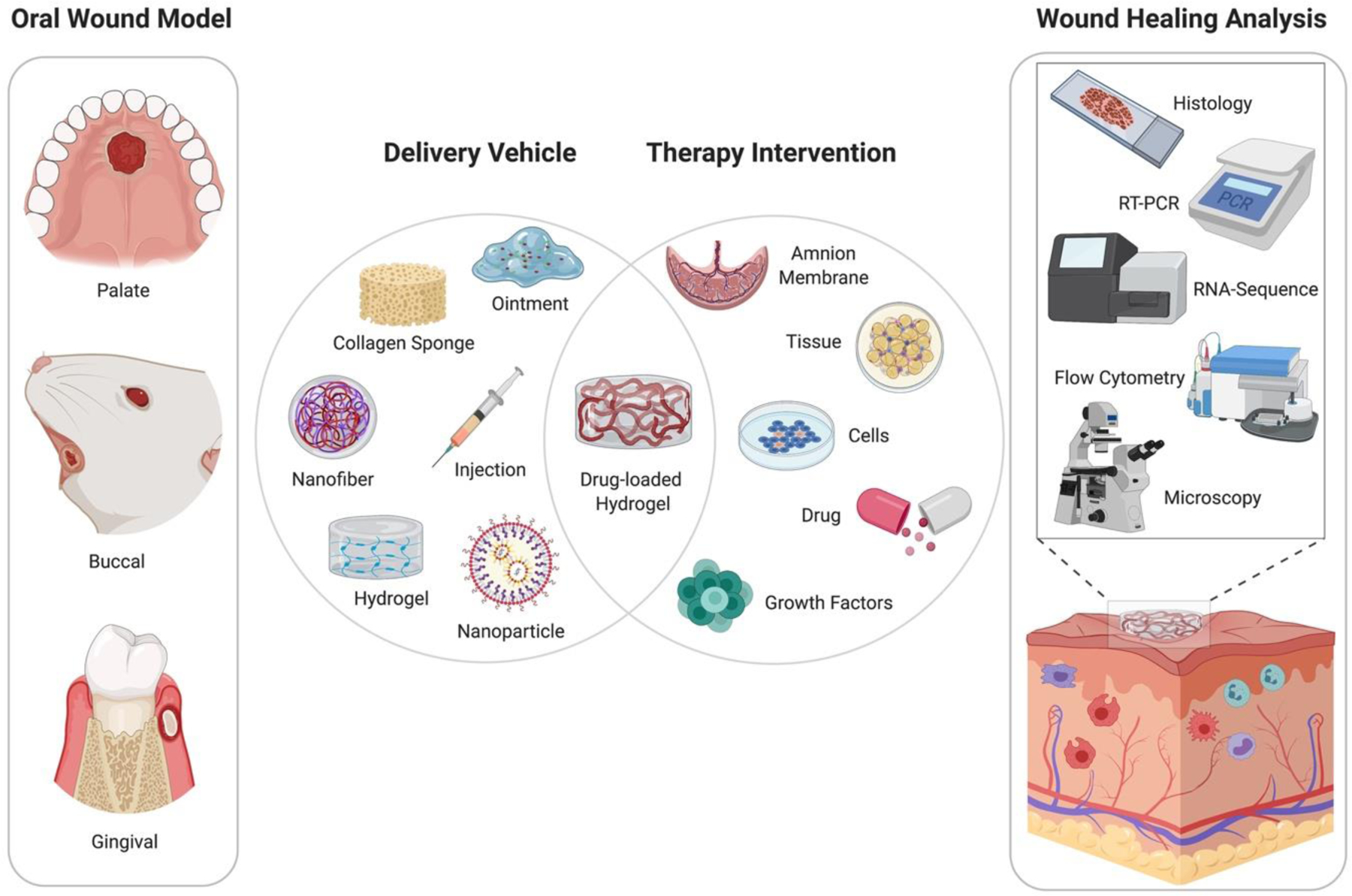Figure 3:

Schematic of current models and therapeutics to promote oral wound healing. Injury models are primarily studied in the palatal, buccal, and gingival regions of the oral cavity. Current modalities for oral wound healing include a wide variety of delivery vehicles, such as polymeric scaffolds, biological matrices, or gel-like ointment. The delivery vehicles can also be coupled with drugs, cells, tissue, or growth factors to enhance therapeutic efficacy. Following treatment, studies evaluated the success of oral wound healing therapy using both qualitative and quantitative approaches, such as histology for tissue re-epithelialization, flow cytometry for immune cell infiltration, and microscopy images for wound closure.
